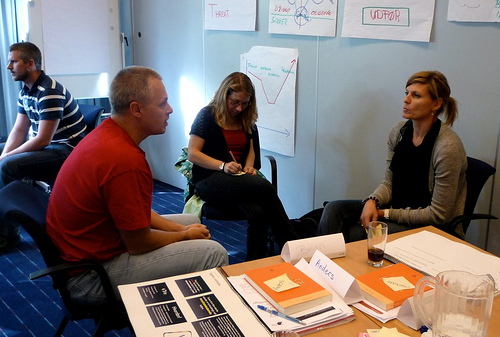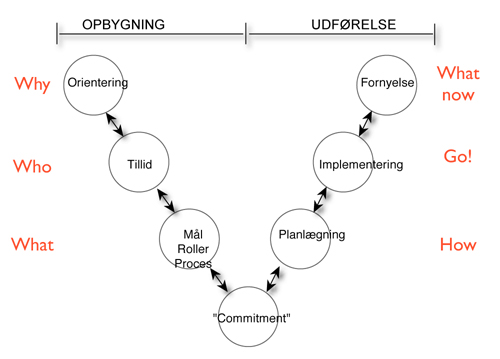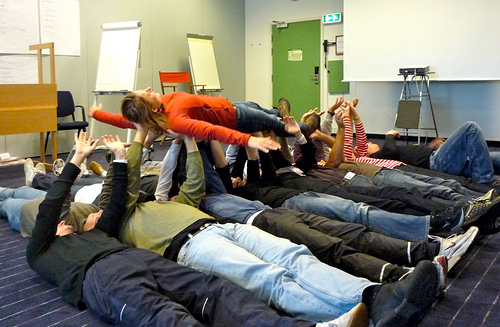A coming paper in the Journal of Marketing addresses that very subject. Building on past research on the role of gratitude in human relationships, it argues that a customer who is made to feel grateful most likely becomes enduringly loyal as a result. Gratitude, as the paper bluntly puts it, can “increase purchase intentions, sales growth and share of wallet.” Robert Palmatier, an associate professor of marketing at the University of Washington and an author of the paper, says that making a customer feel truly grateful toward a business is harder than it might sound. And the hard-wired feelings of reciprocity that can trigger gratitude can just as easily trigger the sense that you’re being treated unfairly.
General
What are your richest passengers doing?
Another great insigt from Seth Godin
It’s not the rats you need to worry about
If you want to know if a ship is going to sink, watch what the richest passengers do.
Read it and think again
Is the meeting industry doomed?
Kodak did not loose the market for paper film because of Fuji or Agfa. The market for film was replaced by digital cameras. British Airways need not worry to much about Lufthansa or SAS – Ryan Air is a problem and so on.
In these examples what has happened is that competition has come from where it was least expected and in both cases this competition was initially ignored as not significant – “they are not delivering the kind of quality that we do” – and bam! One day we wake up and Ryan Air is a huge airline business and we all have digital cameras in our pockets – even the pro’s
This has happened in industry after industry ever since the buggy whip business was exterminated by automobiles. Why and how this happens is well documented by Clayton Christensen in his wonderful book : The Innovators Dilemma
The same shift in client behavior is now occurring in the meeting and conference industry. The competition is not from other regular players in the market but from a combination of events that together have created a perfect storm. Once the storm is over the market will never be the same again.
The elements that are causing this are:
1. The financial crisis has forced business to be more careful how they spend their money so they question the value of every thing – if it is not adding value why are we doing it? ROI i now a key requirement – see more here
2. CSR – The realization that we need to curb our Co2 emissions and one of the big sinners in this is of course travel. (It is also a convenient excuse to cut travel cost)
3. Time pressure on every one means that we are are all looking for ways to cram more into the same 24h/7d week /360d year frame – there is now mores stuff to do, read, see than we have ever experienced before and that means prioritizing. Asking one self hard questions like: is this worth the effort ( travel, money, another night away from home etc).
4. Web 2.0 the big shift from web 1.0 is the ability to interact – real time two way communication on the web. Virtual classrooms, breakout rooms – web casts etc. There is a whole new industry that is growing rapidly and that sees a huge opportunity to replace the traditional meeting environment with a virtual environments. Brush up on Web 2.0 and learning here
Points one 1-3 are the problems we would all like to see solved and point 4 seems to be a possible solution. Not perfect but it works and is easy ( Just like digital cameras)
“At IKEA Virtual Meetings should always be first choice”
Progressive business are responding fast. IKEA has a campaign running called Meet More Travel Less
Tandberg, TNT and Vodaphone are others also working on this.
TANDBERG – 100 000 video calls per month – 2500 flights avoided, 2,5M$ saved on business trips (30M$per year) – 17500 man-hour saved per month – 275 tons of CO2 saved per month
TNT – On track to save nearly11,5 $ in 4 years by replacing travels with videoconferencing – ROI:71%
VODAFONE – 25% reduction in business trips in 2 years – Resulting in double digit millions of cost savings
The response from the meeting industry is ahh.. no need to worry, virtual meetings will never be as good as f2f meetings.
Perhaps not but that is exactly what Kodak said about digital cameras, What BA said about the zero service concept from Ryan Air and what the vinyl record producers said about music on CD’s.
So is there no hope for the meeting industry – yes there is but we need to understand how to deliver value. Class rooms and serial power point monologue are not the solution.
The problem with creating value in the traditional meeting and conference set up is that it is very limited – there is often a short term entertainment value, the odd aha experience – but that’s it.
In a situation where we are all under pressure. Supply, by far, outstrips demand in virtually all industries and services – most business’ create meetings and conferences in order to help participants change – but as any one who has tried to get a teenager to clean up their room by telling them to do so, will recognize, we do not change because someone tells us to do so ( there would be no smokers left in the world if that where the case) Telling does not work.
We change when we arrive at our own conclusions. ( if you do not believe me read Change or Die that will help you reach your own conclusion)
So having one or even worse a series of speakers stand up and tell us what to do, think or feel in order to cope with change is relatively useless – the ROI is negligible – and in that connection the speakers fee is not the main cost, it is the time and travel of the participants.
In order to create real change we need to gather people in order for them to interact. Change requires learning and learning is collaborative – no I do not mean 10 min of ‘networking at the coffee break – but real meaningful conversations – deep dialog.
Only through dialog will you get people to reach their own conclusions and then hopefully act on them. Yes we can have inspirational input if it is short, sweet and to the point AND gets people thinking and talking.
But this will require the meeting industry to radically change their formats,( venues, room, seating,speaking formats, tools, etc) those that do will survive those that don’t will join the buggy whip business as interesting business cases for future students to smile at.
This one is for restaurants – and their guests…
Presented by Online Education
Are you enjoying the conferences you attend?
Here is a simple survey – try it out and see how you view matches that of others.
Fagre ny økonomi
[lang_da]Af Mike Hohnen
Børsen havde i fredagens Executive tillæg 3 artikler, der alle slår på et tema vi har været omkring ved flere lejligheder på to Grow’s diplomlederuddannelse:
1. Kun de stærkeste overlever opsvinget
Med rubrikoverskriften “kunder vil se værdi”.
2. Strategisk nytænkning
Skrevet af Steen Hildebrandt. Vi vidste godt, der var for mange ting, som den kortsigtede optimeringspraksis ikke tog hensyn til.
..Det vigtigste er en forretnings model der tager udgangs punkt i at det væsentlige er levende systemer…
3. Skab dit eget momentum
…ved at skabe nye værdier for sine kunder skaber man virkelig vækst…
Ud på den anden side – en ny begyndelse
Jeg har desuden lige set et videoklip med en af Deutche Bank’s cheføkonomer, som forklarer, hvorfor det her ikke handler om et lille dyk i vækstkurven – men er en længerevarende forestilling.
Også Wired magazine i denne uge en artikel med overskriften: “This crisis is not just the trough of a cycle but the end of an era. We will come out not just wiser but different.”
Jeg skrevet om de her tendenser tilbage i august – Getting to grips with the big shift.[/lang_da]
Kick-off i Berendsen Textil
[lang_da]Det første GROW Leadership forløb for mellemledere i Berendsen Textil er skudt i gang, og kick-off modulet fokuserede i høj grad på Service Profit Chain, og hvordan man skaber intern kvalitet i sin virksomhed.
Vi brugte en del kræfter på at arbejde med Team V-modellen og teamforståelse. Team V-modellen er kort beskrevet en model over den proces, der skal til for at skabe et stærkt team.
Først skal man bruge tid på at skabe tillid, en fælles forståelse og afklaring af forvententninger i gruppen – og definere gruppens mål og og indbyrdes roller (ved at arbejde sig ned gennem den ene side af v’et). Det kan man gøre ved at lave et ‘team manifest’ ud fra nogle centrale spørgsmål, der skal klarlægge gruppens potentiale:
Først da er man klar til at skabe et ‘commitment’ i gruppen og lægge en plan for udførelsen af et givent projekt (ved at arbejde opad gennem den anden side af v’et)
Vi arbejdede med forskellige øvelser, der havde det formål at øge forståelsen for Team V-modellens funktion og vigtighed i gruppeprocesser – så budskabet ikke kun blev forstået intellektuelt, men af hele kroppen.
“How can we improve learning in organizations?”
Jay Cross asks the question:
Here is Jay’s website with more on informal learning



